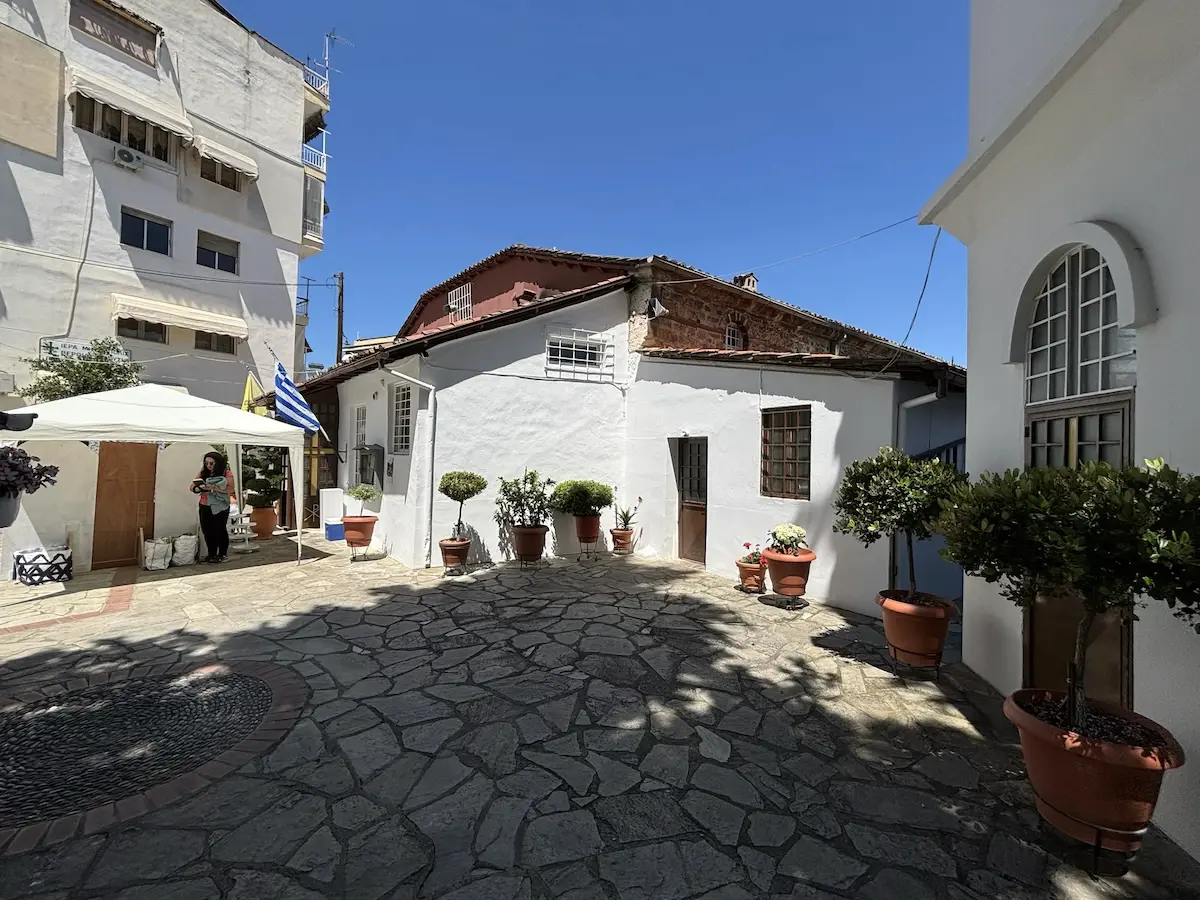Holy Church of Saint Sabbas of Kyriotissa: A 14th-Century Spiritual Haven in Veria
Holy Church of Saint Sabbas of Kyriotissa (14th c.), Mitileka, Veria, Greece

About
Nestled in the historic heart of Veria, Greece, the Holy Church of Saint Sabbas of Kyriotissa stands as a serene testament to the town’s Byzantine past. This 14th-century Greek Orthodox church, dedicated to Saint Sabbas, whispers stories of faith and resilience, inviting visitors to step into a world where spirituality and art intertwine. As one of the cherished religious sites in Veria, this church offers a glimpse into the town’s rich religious heritage. Let’s explore its sacred story and uncover why it’s a must-visit for those seeking Veria’s spiritual treasures.
A Byzantine Sanctuary’s Legacy
Dating back to the 14th century, the Holy Church of Saint Sabbas of Kyriotissa emerged during Veria’s flourishing Byzantine era, a time when the town was a hub of Orthodox Christianity. Dedicated to Saint Sabbas, a revered monk and saint known for his ascetic life, the church likely served as a spiritual refuge for locals navigating the challenges of medieval life. Its historical significance lies in its enduring role as a place of worship, preserving Veria’s Orthodox traditions through centuries of change, including Ottoman rule.
With a strong rating (4.7/5 from 82 reviews), the church is beloved for its intimate atmosphere and historical charm. Its connection to Veria’s Byzantine heritage makes it a vital piece of the town’s cultural mosaic, drawing those eager to explore Veria religious landmarks.
Key Features and Cultural Resonance
The church’s architecture is quintessentially Byzantine, featuring a compact yet elegant design with a domed roof and stone walls that exude timeless strength. Inside, visitors are greeted by intricate frescoes and icons, their faded hues telling tales of devotion. The icon of Saint Sabbas, a focal point of veneration, adds to the sacred ambiance, inviting quiet reflection. The church’s small scale enhances its intimacy, making it feel like a hidden gem among religious sites in Veria.
Culturally, the church is a living link to Veria’s past, hosting liturgies and feast day celebrations that unite the community. Its preservation reflects the town’s commitment to honoring its Orthodox roots, making it a beacon of Veria’s spiritual identity.
Visiting the Holy Church of Saint Sabbas
Located in Veria’s Kyriotissa neighborhood, the church is easily accessible by foot from the town center. It’s open daily, with morning services offering a chance to experience Orthodox rituals. Visitors should dress modestly—covering shoulders and knees—and maintain silence to respect the sacred space. For inquiries, contact the church at +302331022034 or visit the Metropolis of Veria for more details.
Pair your visit with a stop at the nearby [Old Metropolitan Church of Veria]([internal link to Old Metropolitan Church article]), another Byzantine treasure, to deepen your exploration of Veria’s heritage. The Byzantine Museum of Veria offers further insights into the region’s religious art, enriching your journey.
A Timeless Spiritual Retreat
The Holy Church of Saint Sabbas of Kyriotissa is more than a historical site; it’s a sanctuary where Veria’s faith and history converge. Its serene beauty and spiritual depth make it a must-visit for those exploring Saint Sabbas Veria Greece. Whether you’re drawn to Byzantine art, Orthodox traditions, or Veria’s cultural tapestry, this 14th-century haven promises a soul-stirring experience.
Plan your visit to this sacred retreat and let Veria’s heritage captivate you. Have you felt the peace of Saint Sabbas’ church? Share your story in the comments!
Religious Affiliation
Christian
Location
Information
Address
Holy Church of Saint Sabbas of Kyriotissa (14th c.), Mitileka, Veria, Greece
Visiting Hours
- I
- n
- f
- o
- r
- m
- a
- t
- i
- o
- n
- n
- o
- t
- a
- v
- a
- i
- l
- a
- b
- l
- e